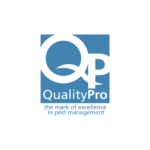The Red Paper Wasp Is The Most Aggressive Paper Wasp Species
Everyone is familiar with the fierce and potentially dangerous group of wasps known as yellow jackets and hornets, especially the latter considering that the country is currently in the grip of murder hornet fever. Yellow jackets live in close association with humans where they establish nests on and inside of structures, on tree branches, within shrubs, and in ground burrows. It is not uncommon for humans to fall victim to yellow jacket attacks after disturbing the pests by accidentally bumping into inconspicuous nests. Every year, several people die from wasp envenomation incidents on residential properties, and a large proportion of these incidents occur in Texas including San Antonio. While it is important for the public to be familiar with the medical threat posed by yellow jackets in residential areas, paper wasps also deserve attention due to their similar nesting habits and aggressive behavior toward humans. Surprisingly, paper wasps are the most commonly managed stinging insect pests on residential and commercial properties in the US, while yellow jackets come in second.
Paper wasps belong to the genus Polistes, and just like most yellow jacket species, paper wasps prefer to nest in urban and suburban areas. Paper wasp nests are frequently found attached to decks, trees, the underside of eaves, door frames, window frames, and occasionally within wall voids and attics. Many people are under the impression that paper wasps are relatively docile and largely harmless, but this is not the case. Although paper wasps are not as aggressive as yellow jackets, medically serious paper wasp envenomations are by no means uncommon, and they will attack in response to nest disturbances just as surely as yellow jackets will. The degree of aggression exhibited by paper wasps varies depending on the species, but most experts agree that the “red paper wasp” (P. carolina) poses the greatest envenomation threat to humans. This is due to their heightened aggression as well as their unusual tendency to establish nests within dark indoor spaces. Red paper wasps can be recognized for their rust red coloring and elongated bodies, and their paper nests are tan or brown in color. If a nest is encountered in a high-traffic area, it should be removed by a pest control professional, but nests found in low-traffic areas should be avoided entirely. It is also important to note that, as a rule, the more brightly colored a paper wasp species is, the more aggressive it become in response to disturbances.
Have you ever found a wasp nest within your home?






